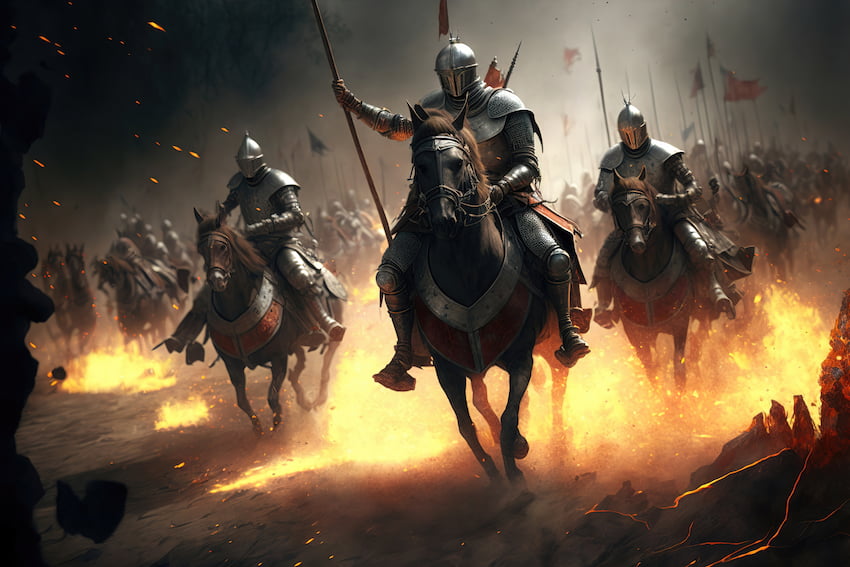Introduction: Bayezid I, also known as Bayezid the Thunderbolt, was a significant figure in the history of the Ottoman Empire. His reign, which lasted from 1389 to 1402, was marked by military conquests, cultural achievements, and a lasting legacy. In this blog post, we will explore the life and accomplishments of this great Sultan, from his early years to his reign and his enduring impact on the Ottoman Empire. From his military campaigns to his cultural contributions, Bayezid's influence can still be felt today. Join us as we delve into the life and times of Bayezid the Thunderbolt, and learn about the man who left an indelible mark on one of the most powerful empires in history.Explore the life, military campaigns, reign, and cultural contributions of Bayezid, along with his legacy and succession in the Ottoman Empire.

Bayezid the Thunderbolt was born in 1354 in Edirne, then the capital of the Ottoman Empire. He was the son of Sultan Murad I and Gulcicek Hatun. As a young prince, Bayezid received an education befitting his royal status, studying the Quran, history, and the art of war. He also trained in horsemanship and swordsmanship, preparing him for the responsibilities that would come with his future role as Sultan.
During his early years, Bayezid accompanied his father on military campaigns, gaining first-hand experience in warfare and leadership. This exposure to the realities of battle and strategic decision-making shaped his worldview and contributed to his development as a formidable military commander.
Despite being the son of a powerful ruler, Bayezid's path to the throne was not without challenges. He had to navigate the complexities of Ottoman politics and court intrigue, demonstrating his political acumen and skill in maneuvering through the treacherous waters of royal succession.
Bayezid's early life set the stage for the remarkable achievements he would later accomplish as Sultan, laying the foundation for his legacy as one of the most influential figures in Ottoman history.
Bayezid the Thunderbolt, also known as Bayezid I, was a powerful sultan of the Ottoman Empire who led numerous military campaigns during his reign. One of his most famous campaigns was the Battle of Nicopolis in 1396, where he defeated a coalition of European forces. This victory solidified his reputation as a formidable military leader and expanded the territorial reach of the Ottoman Empire.
Additionally, Bayezid launched several successful campaigns against the Byzantine Empire, capturing important cities such as Thessalonica and Philadelphia. These conquests further demonstrated his military prowess and expanded the influence of the Ottoman Empire in the region.
Bayezid also conducted military campaigns in Anatolia, consolidating Ottoman control over the territory and quelling internal rebellions. His strategic military maneuvers and decisive victories contributed to the expansion and stabilization of the Ottoman Empire during his reign.
Overall, Bayezid the Thunderbolt's military campaigns were instrumental in solidifying the power and influence of the Ottoman Empire, paving the way for its future growth and dominance in the region.
Bayezid I, also known as Bayezid the Thunderbolt, was the Sultan of the Ottoman Empire from 1389 to 1402. His reign was marked by numerous military campaigns, cultural contributions, and a significant impact on the empire's legacy.
During his rule, Bayezid I expanded the Ottoman Empire's territory through successful military campaigns, including the capture of Sarajevo, Thessalonica, and Bulgaria. His conquests solidified the empire's status as a major power in the region.
Bayezid I was also known for his cultural contributions, promoting the arts, literature, and education throughout the empire. He built mosques, madrasas, and other structures, leaving a lasting legacy on the Ottoman architectural landscape.
However, Bayezid's reign was not without challenges. He faced opposition from rival rulers, including the Mongol leader Tamerlane, who defeated Bayezid at the Battle of Ankara in 1402, leading to his capture and eventual death. Despite this defeat, Bayezid I's impact on the Ottoman Empire's history and expansion was significant, shaping the empire's future for years to come.
Bayezid I, also known as Bayezid the Thunderbolt, was not only a great military leader and ruler, but he also made significant cultural contributions during his reign as the Sultan of the Ottoman Empire.
One of his most notable cultural achievements was the establishment of the first imperial library, which contained a vast collection of rare manuscripts and books from different parts of the world. This library not only promoted the spread of knowledge and learning but also played a crucial role in the preservation of cultural heritage.
Furthermore, Bayezid was a patron of the arts, architecture, and literature. He supported and sponsored the construction of numerous mosques, madrasas, and palaces, which showcased intricate designs and exquisite craftsmanship, reflecting the diverse cultural influences of the Ottoman Empire.
Moreover, Bayezid's reign saw a flourishing of the arts, with the development of new styles in calligraphy, miniature painting, and music. His support for the arts and cultural pursuits helped create a vibrant and cosmopolitan society within the empire.

Bayezid I, also known as Bayezid the Thunderbolt, was a significant figure in the history of the Ottoman Empire. His reign, which lasted from 1389 to 1402, left a lasting legacy that shaped the future of the empire.
One of Bayezid's most enduring legacies was his expansion of the Ottoman territory. During his rule, he led successful military campaigns that resulted in the conquest of new lands and the establishment of Ottoman dominance in the Balkans. This expansion laid the foundation for the empire's future growth and influence in the region.
Bayezid's cultural contributions also played a crucial role in shaping the legacy of the Ottoman Empire. He promoted the development of architecture, literature, and the arts, leaving behind a rich cultural heritage that continued to thrive long after his death.
Bayezid's legacy also extended to the administrative and legal systems of the Ottoman Empire. He implemented reforms that strengthened the central authority of the sultanate and established a more organized and efficient administrative structure. His influence in these areas had a lasting impact on the governance of the empire.
After a long and eventful reign, Bayezid the Thunderbolt met his end in 1403 following his defeat and capture by his own son, Mehmed I. This marked the end of an era in the Ottoman Empire as well as the beginning of a new chapter in the empire's history. Bayezid's death left a power vacuum in the empire, leading to a period of instability and turmoil as rival claimants to the throne vied for power.
Bayezid's death and the ensuing struggle for succession had far-reaching consequences for the empire, shaping its future for years to come. The outcome of this power struggle would ultimately determine the direction the empire would take and the rulers who would lead it in the years to come.
Ultimately, it was Bayezid's son Mehmed I who emerged victorious and ascended to the throne as the next sultan of the Ottoman Empire. His reign would bring stability and consolidation to the empire, laying the groundwork for its future expansion and growth.
Bayezid's legacy lived on through the reign of his son and the subsequent rulers of the Ottoman Empire, shaping the empire's trajectory and leaving a lasting impact on its history.
